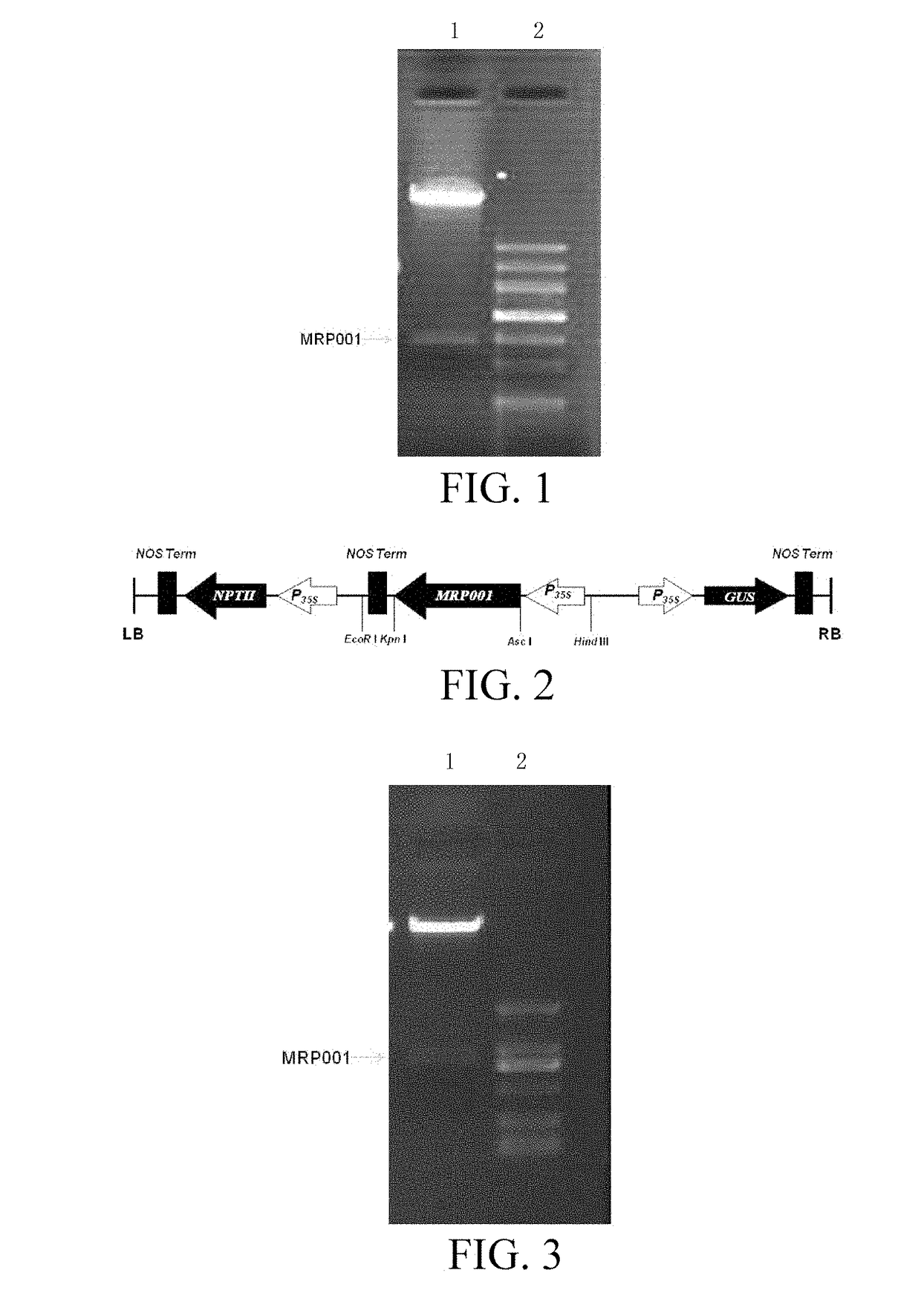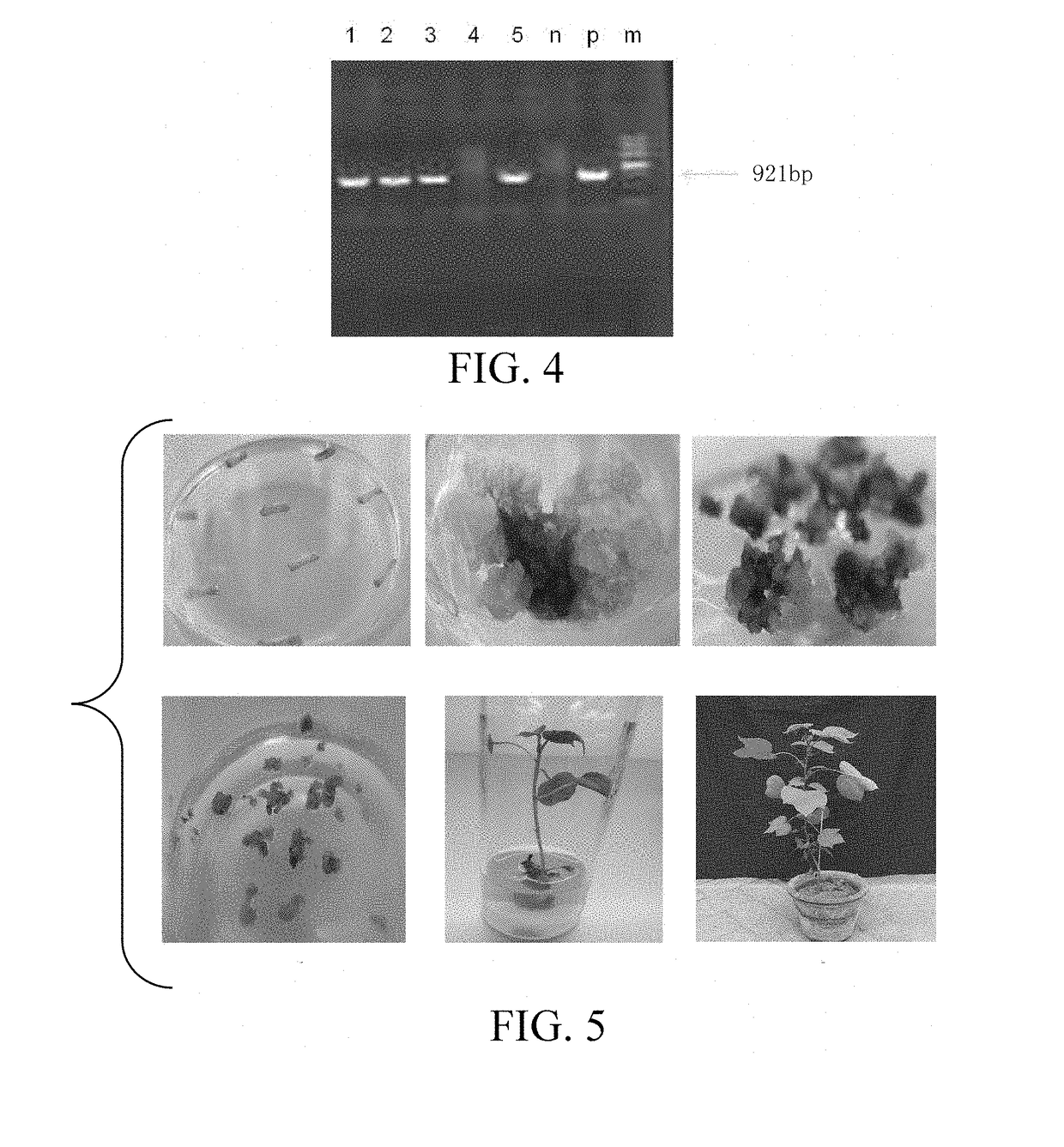Artificially synthesized insect-resistant protein, biological materials associated therewith, and use thereof
a technology of insect resistance and protein, which is applied in the field of artificially synthesized insect resistance protein, biological materials associated therewith, can solve the problems of increasing the number of plant bugs, reducing the use amount of chemical pesticides in the cotton field, and affecting the killing effect of plant bugs, so as to reduce the application of pesticides, reduce the use of chemical pesticides, and reduce the effect of plant bug resistan
- Summary
- Abstract
- Description
- Claims
- Application Information
AI Technical Summary
Benefits of technology
Problems solved by technology
Method used
Image
Examples
example 1
on and Biological Assay of Protein MRP001 Resistant to Plant Bug
[0093]The full-length genes MRP001, MRP002, MRP003, MRP004 and MRP005 were synthesized by Shanghai Bioengineering Co., Ltd.
[0094]I. Preparation of Recombinant Bacterial Cell Expressing MRP001 Protein
[0095]Recombinant bacterial cell expressing the MRP001 protein was constructed by incorporating a DNA encoding the MRP001 protein to a recipient cell, to obtain a recombinant bacterial cell expressing the MRP001 protein. The DNA encoding the MRP001 protein had a nucleotide sequence as shown in positions 896 to 1816 of SEQ ID No.1 in the sequencing list. The method was specifically as follows.
[0096]The DNA sequence between the NdeI and XhoI recognition sites (recognition sequences) in the expression vector pET-28a was replaced by the DNA sequence encoding MRP001 as shown in positions 896 to 1816 of SEQ ID No.1, and keeping the remaining DNA sequences unchanged, to obtain a recombinant vector pET28a-MRP001.
[0097]It was confirm...
example 2
on of Plant Bug-Resistant Transgenic Cotton
[0114]I. Construction of Plant Expression Vector
[0115]The DNA sequence between the HindIII and EcoRI recognition sites (recognition sequences) of the expression vector pCambia2301 was replaced by the DNA sequence as shown in SEQ ID No.1, and the remaining DNA sequences were kept unchanged, to obtain a recombinant vector pCambia2301-35S-MRP001-NOS (partial structure of which is schematically shown in FIG. 2). SEQ ID No.1 is composed of 2093 nucleotides, in which the positions 1 to 860 are the DNA sequence of the CaMV35S promoter, the positions 896 to 1816 are a DNA coding sequence of the MRP001 protein, and the positions 1830 to 2093 are the DNA sequence of the NOS terminator.
[0116]It was confirmed by identification through cleavage (FIG. 3) and DNA sequencing that the nucleotide sequence of the MRP001 gene in pCambia2301-35S-MRP001-NOS was the nucleotide sequence as shown in positions 896 to 1816 of SEQ ID No.1. The pCambia2301-35S-MRP001-N...
PUM
| Property | Measurement | Unit |
|---|---|---|
| Electrical resistance | aaaaa | aaaaa |
Abstract
Description
Claims
Application Information
 Login to View More
Login to View More - R&D
- Intellectual Property
- Life Sciences
- Materials
- Tech Scout
- Unparalleled Data Quality
- Higher Quality Content
- 60% Fewer Hallucinations
Browse by: Latest US Patents, China's latest patents, Technical Efficacy Thesaurus, Application Domain, Technology Topic, Popular Technical Reports.
© 2025 PatSnap. All rights reserved.Legal|Privacy policy|Modern Slavery Act Transparency Statement|Sitemap|About US| Contact US: help@patsnap.com



